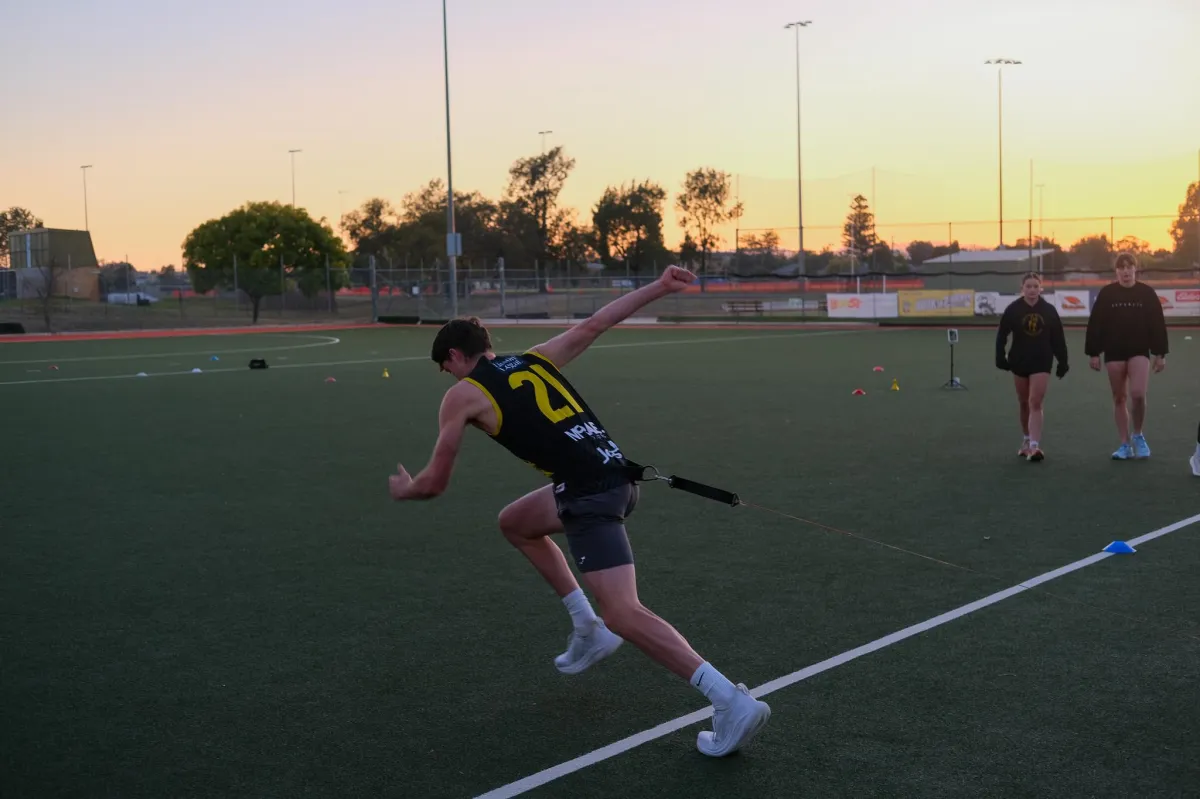
Top 3 Off-Season Training Mistakes (And How to Avoid Them)
Train smarter this off-season to come back stronger, faster, and more resilient.
The off-season is a golden opportunity. It's your time to reset, rebuild, and prepare your body and mind for an even better season ahead. But too often, athletes fall into common traps—pushing too hard, focusing on the wrong things, or simply going through the motions without a plan.
If you want to return to your sport better than ever, avoid these 3 off-season training mistakes and learn how to make every session count.
1. Skipping Recovery: More Isn’t Always Better
The mistake:
Thinking more training = more progress.
Many athletes think the off-season is the time to go all-out, every day. But recovery is where real growth happens. Without it, your body doesn’t get a chance to repair, rebuild muscle, or adapt to the hard work you’re putting in. That leads to fatigue, burnout, and injuries.
How to fix it:
Balance your hard work with smart recovery.
✅ Schedule deloads: Every 4–6 weeks, reduce your training intensity. Let your body recharge while maintaining your base.
✅ Add active rest: Do low-impact activities like swimming or walking. These help with blood flow and recovery without added stress.
✅ Prioritise sleep and nutrition: Aim for 7–9 hours of quality sleep each night and fuel your body with a mix of protein, good carbs, and hydration.
Recovery isn’t slacking. It’s strategy. The better you recover, the harder you can train—and the more progress you’ll make.
2. Only Training Strength: Don’t Forget Speed and Agility
The mistake:
Lifting heavy but neglecting how you move.
Strength training is important. But strength without speed, agility, and coordination won’t help you change direction, win a sprint, or react under pressure. The off-season is the perfect time to sharpen your athletic tools—not just build muscle.
How to fix it:
Train like an athlete, not just a lifter.
✅ Multi-directional speed drills: Practice sprinting in all directions—forward, backward, and sideways.
✅ Progressive sprinting: Start with short sprints (10–20m), then gradually build up to 40–60m efforts.
✅ Agility-focused drills: Use cones, ladders, and change-of-direction work to improve quickness and footwork.
Being strong is great—but being strong and fast is a game-changer.
3. No Plan or Consistency: Winging It Wastes Time
The mistake:
Training without structure or skipping sessions.
Some athletes train hard for a week, then disappear for two. Others lift without a plan, hoping it’ll all work out. But inconsistent training leads to inconsistent results. Without direction, you’re just guessing—and missing chances to improve.
How to fix it:
Train with purpose.
✅ Set clear goals: Know what you want to improve—strength, speed, recovery, mobility—and build your plan around it.
✅ Use a training program: Work with a coach or follow a structured 4–6 week plan that includes strength, speed, agility, and recovery days.
✅ Track your progress: Use a notebook or app to stay accountable. Celebrate the small wins, and adjust when needed.
Small steps, taken consistently, lead to big results.
Final Thoughts: Build a Better Off-Season Routine
The off-season is your chance to take control of your development. Skip the guesswork. Train with intention. And most importantly—train smart.
✅ Recover hard so your body can adapt and grow
✅ Train speed and agility to stay sharp and explosive
✅ Follow a plan to stay consistent and make real progress
Avoid these mistakes, and you won’t just survive the off-season—you’ll dominate it.
Ready to level up this off-season?
Our Athlete’s Edge Off-Season Programs are built for progress, balancing strength, speed, and recovery to help you come back stronger than ever.
Reach out now to get started.